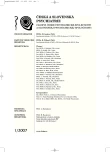Current View on the Suicide Risk during Treatment of Antidepressants in Children
Současný pohled na suicidální riziko v průběhu antidepresivní léčby u dětí
V průběhu antidepresivní léčby malá část dětí (2-3 %) vykazuje příznaky suicidality definované jako zvýšené suicidální myšlenky nebo chování. Mechanismy, kterými je možné vysvětlit zvýšené suicidální riziko v průběhu antidepresivní léčby, jsou: progrese depresivního onemocnění během neúčinné léčby, energizující fenomén, aktivační syndrom a přesmyk deprese do mánie nebo smíšená fáze. Budoucí studie klinických a biologických markerů by měly umožnit lepší predikci u pediatrických pacientů, vykazujících příznaky behaviorální senzitivity k účinkům antidepresiv.
Klíčová slova:
antidepresiva, děti, suicidalita, riziko.
Authors:
I. Drtílková
Authors‘ workplace:
Psychiatrická klinika FN Brno
přednostka prof. MUDr. E. Češková, CSc.
Published in:
Čes. a slov. Psychiat., 103, 2007, No. 1, pp. 22-27.
Category:
Comprehensive Reports
Overview
A small minority of children and adolescents (2-3%) seems prone to suicidality when defined as increased suicidal ideation or behavior during treatment with antidepressants.. Mechanisms proposed to explain emergence of suicidality during antidepressant treatment are : progression of underlying depression reflecting ineffective treatmnent, energizing phenomen, activation syndrome and stage shift from depression into mania or mixed state.Future studie of clinical or biological markers may allow a better prediction of which pediatric patiens are most liable to show behavioral sensitivity to antidepressants.
Key words:
antidepressants, children, suicidality , risk.
Labels
Addictology Paediatric psychiatry PsychiatryArticle was published in
Czech and Slovak Psychiatry

2007 Issue 1
- Memantine Eases Daily Life for Patients and Caregivers
- Memantine in Dementia Therapy – Current Findings and Possible Future Applications
- Hope Awakens with Early Diagnosis of Parkinson's Disease Based on Skin Odor
- Deep stimulation of the globus pallidus improved clinical symptoms in a patient with refractory parkinsonism and genetic mutation
Most read in this issue
- Slovak Adaptation of CORE-OM (Clinical Outcomes in Routine Evaluation – Outcome Measure)
- Psychic Symptoms of Multiple Sclerosis
- Neurobiology of ADHD
- Current View on the Suicide Risk during Treatment of Antidepressants in Children
